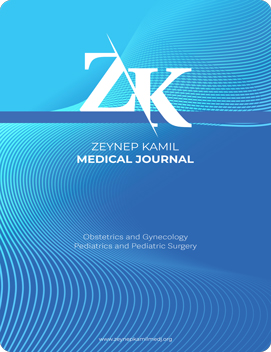Quick Search
Evaluation of the relationship between proteinuria levels and perinatal and neonatal outcomes
Can Ata1, Ufuk Atlıhan2, Onur Yavuz3, Aytuğ Avşar4, Alper İleri5, Tevfik Berk Bildacı6, Selçuk Erkılınç61Department of Obstetrics and Gynecology, Buca Seyfi Demirsoy Training and Research Hospital, Izmir, Turkey2Department of Obstetrics and Gynecology, Manisa Merkezefendi State Hospital, Manisa, Turkey
3Department of Obstetrics and Gynecology, Dokuz Eylul University Faculty of Medicine, Izmir, Turkey
4Department of Obstetrics and Gynecology, Tinaztepe Galen University Faculty of Medicine, Izmir, Turkey
5Department of Obstetrics and Gynecology, Tepecik Training and Research Hospital, Izmir, Turkey
6Department of Obstetrics and Gynecology, Izmir Democracy University Faculty of Medicine, Izmir, Turkey
INTRODUCTION: To evaluate the relationship between proteinuria levels and maternal and neonatal outcomes.
METHODS: This study retrospectively evaluated a total of 2,266 pregnant women who received follow-up care and delivered at our hospital between January 2018 and 2024. Of these, 76 patients who exhibited proteinuria during pregnancy were included in the analysis. We assessed demographic, laboratory, and obstetric data for all participants, including age, smoking status, gravida, blood urea nitrogen (BUN) levels, platelet count, 24-hour proteinuria values, gestational hypertension (GHT), fetal growth restriction (FGR), preeclampsia, preterm birth (PTB), Apgar scores, and birth weight.
RESULTS: The severe group had significantly higher rates of gestational hypertension (GHT), preeclampsia, preterm birth (PTB), and fetal growth restriction (FGR) compared with the other groups (p<0.001 for all). Apgar scores at 1 and 5 minutes were lower, and birth weight was significantly reduced in the severe group (p<0.001). The rate of NICU admissions was also higher in the severe group (p<0.001).
DISCUSSION AND CONCLUSION: This study shows that severe proteinuria is associated with hypertensive diseases, fetal growth restriction, preterm birth, and neonatal complications. Close monitoring of pregnant women with proteinuria and early intervention may play an important role in reducing possible complications. Evaluation of proteinuria levels together with maternal and fetal risk factors may optimize clinical management to improve pregnancy outcomes.
Keywords: Maternal, perinatal, preeclampsia, proteinuria.
Manuscript Language: English
















